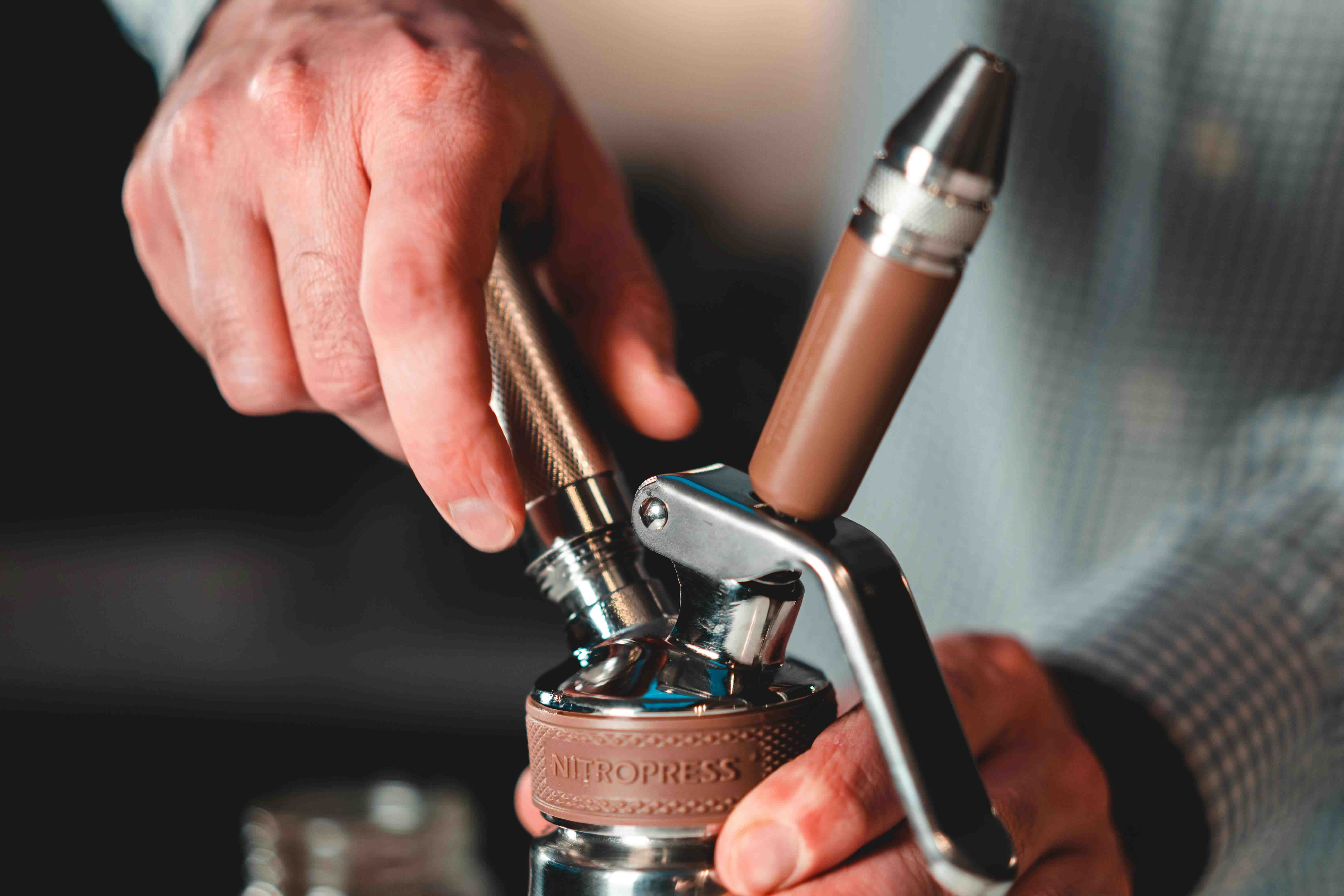When you need cleaner internals, drier systems and fewer rejects, Nitrogen 4.0 is the smart upgrade from standard industrial grade. You’re still getting the inert, non-flammable behaviour that makes nitrogen a safe workhorse, but with tighter purity to support oxygen/moisture-sensitive processes in stainless fabrication, food & beverage, pharmaceutical and analytical tasks, and HVAC commissioning. Remember: it’s still a compressed gas under pressure—so your storage, handling and transport controls don’t change.
If you’re currently purging with 3.0 (industrial grade) because it’s “good enough,” this article gives you practical reasons, checklists and calculations that show where 4.0 pays back—cleaner weld roots, drier refrigeration circuits, better shelf-life, fewer re-runs—and how to implement it properly on site.
What “4.0” Purity Means in Practice
Gas grades are typically expressed as “n.n” where the number of nines indicates maximum impurity allowance. In general industry shorthand:
Nitrogen 3.0 ≈ 99.9% purity (max impurities ≈ 0.1%)
Nitrogen 4.0 ≈ 99.99% purity (max impurities ≈ 0.01%)
Nitrogen 5.0 ≈ 99.999% purity (max impurities ≈ 0.001%)
Why does that extra nine matter? Because oxygen and moisture—two of the most troublesome contaminants—each fall by roughly an order of magnitude when you step up a grade. That tighter control shows up as:
Stainless fabrication: less internal oxidation/heat tint in roots and bores.
Food & beverage: lower residual oxygen in headspace and lines → slower staling and colour loss.
HVAC & refrigeration: less moisture to form acids/ice; cleaner compressor starts; fewer callbacks.
Analytical & pharmaceutical utilities: fewer false positives and cleaner baselines in instruments that are sensitive to O₂/H₂O.
Tip: Purity is necessary but not sufficient. You still need clean hardware, correct flows and purge methods, and measurement (e.g., oxygen sensors or dew point meters) to prove the result.
Where Nitrogen 4.0 Shines (and Why)
Stainless Fabrication & Orbital Welds
When you’re backing/covering stainless with nitrogen, you’re trying to exclude oxygen from hot metal to prevent heat tint (coloured oxides) and grain boundary attack. With 4.0:
Cleaner roots: Tighter O₂ limits reduce internal oxidation, so you get minimal tint and better corrosion resistance.
Less post-weld remediation: Fewer pickling and re-polish steps, less rework time, lower consumables spend.
More stable purges: Consistency helps on repetitive orbital welds where change-out and cycles are critical.
Practical setup:
Use closed-volume purges (dams, bladders, purge films) sized to the pipe/ID to reduce gas consumption.
Target low, laminar flows using a needle valve/flowmeter. Turbulence drags air back in.
Verify with ppm-level O₂ sensors at the effluent; weld only when set-point is reached and stable.
Food & Beverage (Utility Inerting)
Oxygen is the enemy of colour, flavour, aroma and shelf-life. Utility nitrogen at 4.0 grade is a straightforward way to:
Purge headspace, lines and tanks to slow oxidative reactions.
Reduce dissolved oxygen pickup during transfers (combined with good pipework design and deaeration where relevant).
Support MAP (modified atmosphere packaging) headspace targets where nitrogen is the balance gas.
Practical setup:
Flow from bottom to top when purging vessels (displacement > dilution).
Use flow restrictors and flowmeters for repeatability.
Log O₂ readings at the outlet or via headspace oxygen meters to prove your process parameters (per HACCP/SOP).
HVAC Commissioning & Refrigeration
Moisture is a silent killer in refrigeration circuits. It hydrolyses lubricants, forms acids, and can freeze in expansion devices. With 4.0 nitrogen:
Drier circuits: Lower water content from the cylinder means your pressure tests and blow-downs don’t add moisture.
Better vacuums: Following nitrogen sweeps with a proper evacuation reduces dry-down time and improves reliability.
Cleaner compressor starts: Less risk of acid formation and bearing damage.
Practical setup:
Pressure test to your system spec with dry 4.0 nitrogen, then sweep/vacuum cycles.
Use a calibrated micron gauge to confirm evacuation endpoints.
Keep regulators, hoses and manifolds clean and capped when not in use to avoid back-contamination.
Implementation Details That Matter (and Save You Money)
Flow Control
Needle valves and rotameter-style flowmeters give stable low flows for purges and instrument utilities.
For displacement purges (vessels/pipes), start slow to avoid mixing layers.
For dilution purges (complex geometries), use calculated volumes and multiple exchanges—but still avoid turbulence.
Instrumentation
O₂ sensors: For welding/inerting, ppm-capable sensors confirm purge endpoints; place the probe where air would accumulate (high points).
Dew point meters: Useful for HVAC dry-down and any moisture-critical lines; log values for QA.
Pressure & flow logging: Simple data helps defend quality when auditors—or customers—ask.
Materials & Cleanliness
Use stainless or clean copper lines; avoid rubber hoses that outgas or shed.
Oxygen-compatible seals and oil-free gas paths prevent back-contamination.
Cap everything: cylinders, regulators, hoses, points-of-use. Dust and humidity undo purity.
Regulators & Point-of-Use Hardware
Match inlet pressure ratings to your cylinder/pack supply.
For very low flows, add a precision needle valve downstream of a two-stage regulator.
Keep a dedicated regulator for 4.0 nitrogen—don’t cross-use with process gases that carry odours/oils.
Purging: Displacement vs Dilution (How to Choose & Size)

Displacement purges push air out with a higher-density gas entering from the bottom and exiting at the top. This is efficient for simple vessels and straight pipe runs.
Pros: Lowest gas usage for large volumes; minimal mixing.
Cons: Needs a geometry that allows stable layering (baffles complicate things).
Dilution purges mix and sweep out contaminants with multiple volume exchanges—common in complex equipment.
Pros: Works even in awkward shapes.
Cons: More gas usage; benefits from measured flows and O₂ monitoring to avoid guesswork.
Sizing guidance (practical, vendor-agnostic):
Start with 3–5 vessel volumes for a dilution purge, checking O₂ until you hit your target.
For displacement, go slower and longer; watch O₂ at the vent and avoid flow rates that cause turbulent mixing.
Pressure Testing & Leak Checks (HVAC/Fabrication)
Pressure test with dry Nitrogen 4.0 to the specified test pressure; hold and record pressure decay.
Use bubble testing (soap solution) at joints and suspect fittings as a quick screen.
Follow with vacuum and dry-down for refrigeration circuits; document micron readings and hold times.
Common pitfalls:
Using shop air to “save nitrogen”—you just added water and oxygen.
High purge flows that entrain air instead of displacing it.
Dirty regulators/hoses contaminating otherwise high-purity gas.
Moisture & Oxygen: Why Your Measurement Strategy Matters
O₂: For welding and MAP, oxygen is often the primary control parameter. A ppm-capable sensor provides proof that the purge is complete.
H₂O (dew point): In HVAC and moisture-sensitive utilities, dew point tells you if your system is truly dry. Aim for values that align with your brand SOP or vendor spec and record them.
Good practice: Add purge endpoints and instrument serial numbers to your work packs. It reduces disputes and compresses audit time.
Selecting Cylinders, Packs or Bulk (Right-Sizing Supply)
Your decision should balance consumption rate, change-out frequency and floor space:
Single cylinders: Good for mobile work, low-to-moderate usage, site service.
Packs/bundles (multi-cylinder): Cut change-outs, stabilise supply pressure for longer runs, ideal for fab shops and packaging lines.
Bulk or micro-bulk: High-demand sites with consistent consumption and space for fixed assets.
Pro tips:
Standardise on one connector type and regulator family to avoid mix-ups.
Use whip-checks and restraints where applicable; train techs to close valves and bleed lines at shift end.
Safety, Storage & Transport (NZ Quick Reference)
Non-flammable, compressed: treat cylinders with respect for stored energy. (GHS H280 applies.)
Asphyxiant: Nitrogen can displace oxygen—ensure ventilation, especially in pits, basements and plant rooms.
Storage: Upright, restrained, dry and ventilated; out of direct sun; typically < 65 °C exposure.
Handling: No dragging/rolling. Use a trolley; keep valve guards on during transport and storage.
Transport (NZ): UN 1066, Class 2.2. Secure and ventilate the vehicle; valves closed & capped.
Emergency planning: Know where your shut-offs are; train on oxygen deficiency hazards and PPE for connections.
Quality & ROI: Where the Step-Up Pays Back

It’s easy to price a cylinder and forget the true cost of rework:
Stainless fabrication: Every hour spent pickling out heat tint, buffing, or repeating orbital runs costs labour, chemistry, and throughput. 4.0 reduces those cycles.
Food & beverage: Lower DO (dissolved oxygen) uptake and reduced headspace O₂ translate to fewer quality holds and better shelf-life.
HVAC/R: Moisture-driven callbacks (acid/ice issues) destroy margins. Drier nitrogen for testing and sweeps is cheap insurance.
Add a simple cost-of-quality line item to jobs: rework hours, consumables, lost production, callouts. You’ll usually find the 4.0 premium disappears in the noise.
Field Checklists
Stainless Purge Checklist
Dedicated Nitrogen 4.0 regulator, clean lines, capped when not in use
Purge dam/film installed; leak-tight
Flowmeter + needle valve set for laminar purge
O₂ sensor at outlet; weld only below set-point and stable
Post-weld visual: minimal tint; record heat-affected zone condition
Food & Beverage Inerting
Bottom-up displacement purge where possible
Validated headspace or line O₂ target; log results
Flowmeter readings recorded; valves labelled and locked when idle
Clean, oil-free, food-grade compatible hardware
HVAC Commissioning
Pressure test with dry 4.0 nitrogen; record pressure/hold time
Nitrogen sweeps followed by deep vacuum; micron gauge logs saved
No shop air used anywhere in the circuit
Caps/valve guards replaced at every disconnect
FAQs
-
Is Nitrogen 4.0 flammable?
No. Nitrogen is non-flammable and inert. The hazards are stored pressure and asphyxiation in poorly ventilated spaces.
-
Where’s the ROI vs 3.0?
In reduced rework and downtime: cleaner stainless roots, lower moisture carry-over in HVAC, fewer repeat pressure tests, and fewer quality holds in packaging.
-
Do I need special regulators?
Use a clean, pressure-rated regulator suitable for nitrogen service. For very low flows, include a needle valve or flowmeter. Keep the entire gas path clean and dry.
-
Is 5.0 better than 4.0 for everything?
Not always. 5.0 adds cost without proportional benefit unless your process or instrument demands it. Many fab, HVAC and food utility tasks see the sweet spot at 4.0.
-
Can I mix 4.0 nitrogen with plant air to save gas?
No—mixing defeats the purpose and re-introduces oxygen and moisture. Use 4.0 end-to-end in the purge/test path.
-
How do I prove my purge?
Measure. O₂ sensors for oxygen-sensitive jobs; dew point for moisture-critical circuits. Record results with time, location, instrument ID.
Troubleshooting Guide
Heat tint still present on stainless roots
Check for leaks in purge dams.
Reduce flow to avoid turbulence; ensure laminar displacement.
Verify O₂ sensor calibration and location (air pockets hide at high points).
Headspace oxygen won’t drop
Confirm purge direction (bottom-up).
Slow the flow and seal the vessel; look for bypass paths.
Ensure Reg/lines are clean and not back-feeding contaminants.
HVAC circuit won’t hit target dew point/microns
Repeat nitrogen sweep + vacuum cycles.
Replace/inspect Schrader cores, hoses and manifold seals.
Check ambient humidity and leave more time for dry-down.
Implementation Example (Walk-Through)
Scenario: Commissioning a supermarket refrigeration rack.
Pre-flight: Dedicated 4.0 nitrogen bundle; clean, capped two-stage reg; micron gauge; leak solution; documentation sheet.
Pressure test: Bring circuit to specified pressure with 4.0 nitrogen; stabilise temperature; hold and record pressure decay.
Leak screening: Soap test at joints, valves, and factory couplings; fix any bubbles immediately.
Nitrogen sweep: Vent and sweep with 4.0 nitrogen to displace moist air.
Vacuum: Pull down with a clean vacuum pump to your micron target; isolate and hold; record recovery.
Repeat if needed: Alternate sweep/vacuum until dew point/microns meet spec.
Sign-off: Attach logs to the commissioning pack; cap service ports.
Result: Dry, clean system, smoother oil return, reduced callback risk.
The Bottom Line
Nitrogen 4.0 is a small specification change with outsized quality impact. It helps you cut rework, protect equipment, and standardise on a process that auditors and customers recognise. Pair the grade with clean gear, controlled flow, and real measurements—and you’ll feel the difference in fewer rejects, faster sign-offs and happier clients.
Safety, Storage & Transport (NZ Quick Reference – Recap)
Classification: Non-flammable, compressed gas (UN 1066, Class 2.2).
Hazards: Pressure and oxygen displacement; ventilate confined spaces.
Storage: Upright, restrained, dry, ventilated; out of direct sun; keep below elevated surface temps (e.g., < 65 °C).
Handling: No dragging/rolling; use trolleys; keep valve guards on; close valves when idle.
Transport: Secure cylinders, ventilate vehicle, valves closed & capped; follow NZ road rules for dangerous goods where applicable.
Call to Action
Ready to reduce rework, moisture issues and oxygen-related defects? Standardise your purging, testing and inerting with Nitrogen 4.0 and adopt the measurement and logging habits outlined here. Your welds, refrigeration circuits and packaged products will show the difference in fewer rejects, fewer callbacks and tighter QA.
